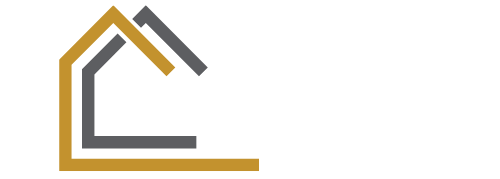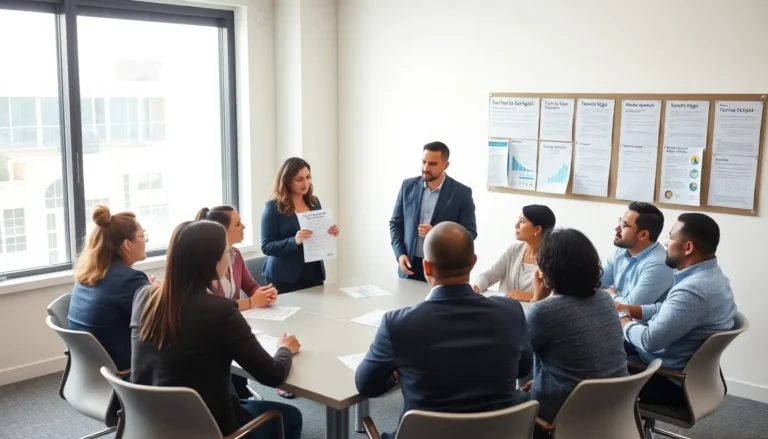Relocating can feel like a mix of excitement and chaos, like trying to dance while juggling flaming torches. Whether it’s a new job, a fresh start, or just a change of scenery, moving can be a wild ride. But fear not! With the right tips and tricks, it can also be a smooth transition that leaves you feeling like a relocation rockstar.
From packing strategies that won’t leave you in tears to finding the best pizza joint in your new neighborhood, this guide has got you covered. Hefty boxes and bubble wrap don’t have to be your worst nightmare. Embrace the adventure and get ready to tackle your move with confidence and a sprinkle of humor. After all, who wouldn’t want to turn a daunting task into a memorable experience?
Table of Contents
ToggleUnderstanding Relocation
Relocation involves moving from one place to another, often requiring careful planning and preparation. Factors influencing the process include job opportunities, family needs, or lifestyle changes. Understanding these elements helps minimize stress during the transition.
Prioritizing tasks improves the moving process. Creating a moving checklist acts as a roadmap, ensuring nothing is overlooked. Include deadlines for utilities transfers, packing schedules, and logistical arrangements.
Budgeting remains crucial for relocation. Assessing expenses related to moving services, travel, and new housing allows for clearer financial planning. Identifying possible costs upfront reduces surprises later.
Researching the new area plays a significant role in easing the transition. Investigate the local amenities, schools, and transportation options. Knowledge about community resources fosters a sense of belonging and comfort.
Networking with locals or joining community groups accelerates acclimation. Engaging in social activities helps build relationships and settle into the new environment. Participation in community events often leads to lasting connections.
Lastly, maintaining flexibility throughout the moving process aids in managing unexpected challenges. Remain open to change, adapting plans as necessary, fosters resilience. With the right strategies, relocation transforms from a daunting task into an exciting new chapter.
Planning Your Move
Planning a move involves thorough preparation and organization. Following specific strategies streamlines the process and helps manage stress.
Creating a Moving Checklist
Establishing a moving checklist ensures no detail gets overlooked. Start with tasks such as decluttering, packing, and contacting relocation services. Include deadlines for each task to maintain momentum. Prioritize essential items first, focusing on what needs to be done in the weeks leading up to the move. Items like obtaining moving supplies and notifying utility providers should feature prominently. Revisit the checklist regularly to track progress and adapt if new tasks arise.
Setting a Budget
Setting a budget for relocation helps avoid unexpected expenses. Begin by estimating costs such as moving company fees, packing materials, and new utility setups. Research average relocation costs in your area to create a realistic estimate. Allocate funds for potential surprises, like repairs or security deposits. Regularly review the budget throughout the planning process, adjusting as necessary. Prioritize major expenses first, ensuring adequate funds remain for smaller, unforeseen costs.
Packing Efficiently
Packing efficiently streamlines the moving process, making it manageable and organized. Careful preparation helps ensure that belongings arrive safely at the new location.
Organizing Your Belongings
Begin by decluttering. Prioritizing items based on usage allows for easier packing. Sort belongings into categories—keep, donate, and discard. Group similar items together to simplify the packing process. Label boxes clearly according to room or contents, making unpacking a breeze. Keep essentials in a separate box for quick access during the transition. Enlist help from friends or family if needed, as a fresh perspective can aid in decision-making.
Choosing the Right Packing Materials
Select sturdy boxes for packing. Consider various sizes to accommodate different items. Use bubble wrap, packing paper, or cloth for fragile belongings to prevent damage. Invest in high-quality tape to secure boxes reliably. Mark boxes with a fragile label when necessary. Opt for specialized materials like wardrobe boxes for clothing or dish pack boxes for kitchen items. Always keep a supply of extra packing supplies on hand to address unforeseen needs.
Hiring Professionals
Hiring professional movers simplifies the relocation process. It saves time and ensures reliable handling of belongings.
Finding Reliable Movers
Start by asking friends and family for recommendations. Online reviews and ratings on sites like Yelp and Google can help gauge a company’s reputation. Verify credentials by checking if they have licenses and insurance. Contact at least three movers for in-home estimates, which provide a clearer picture of costs. Evaluate their customer service during preliminary interactions, as responsiveness indicates their reliability.
Comparing Quotes
Gathering multiple quotes allows for informed decisions. Analyze each estimate, focusing on services included such as packing, loading, and unloading. Ensure quotes reflect similar services; hidden fees may vary widely among companies. Inquire about additional costs not covered in the estimates to avoid surprises. Prioritize a balance between price and quality of service when selecting the best option. A comprehensive comparison fosters a successful relocation experience.
Settling Into Your New Home
Settling into a new home involves essential tasks that contribute to a smooth transition. Familiarizing oneself with the new environment can significantly enhance comfort and ease.
Setting Up Utilities
Setting up utilities ranks as a top priority after moving in. Contact utility companies promptly to establish electric, gas, water, and internet services. Maintaining a checklist for each service helps ensure nothing is overlooked. Scheduling installations ahead of time can minimize disruptions, allowing for a more efficient move-in process. Verifying the status of utilities before arrival prevents unnecessary surprises. Being proactive with utility setups fosters a seamless transition into everyday life.
Getting to Know the Neighborhood
Getting to know the neighborhood enriches the settling process. Exploring local parks, shops, and dining establishments offers insight into the community’s character. Attending community events provides excellent opportunities for meeting neighbors and forging new connections. Many neighborhoods host farmer’s markets or festivals, which can be excellent starting points for social interaction. Joining local clubs also promotes engagement and helps establish friendships. Discovering nearby amenities enhances the overall experience and fosters a sense of belonging.
Relocating can be a thrilling yet challenging journey. By implementing the right strategies and maintaining a flexible mindset, individuals can turn the chaos of moving into an enjoyable experience. Prioritizing tasks and staying organized are key to ensuring a smooth transition.
Building connections in the new community can enhance the sense of belonging and make settling in more enjoyable. With careful planning and the right support, anyone can navigate the complexities of relocation and embrace the opportunities that come with a fresh start. Embracing this adventure can lead to new friendships and unforgettable memories.




